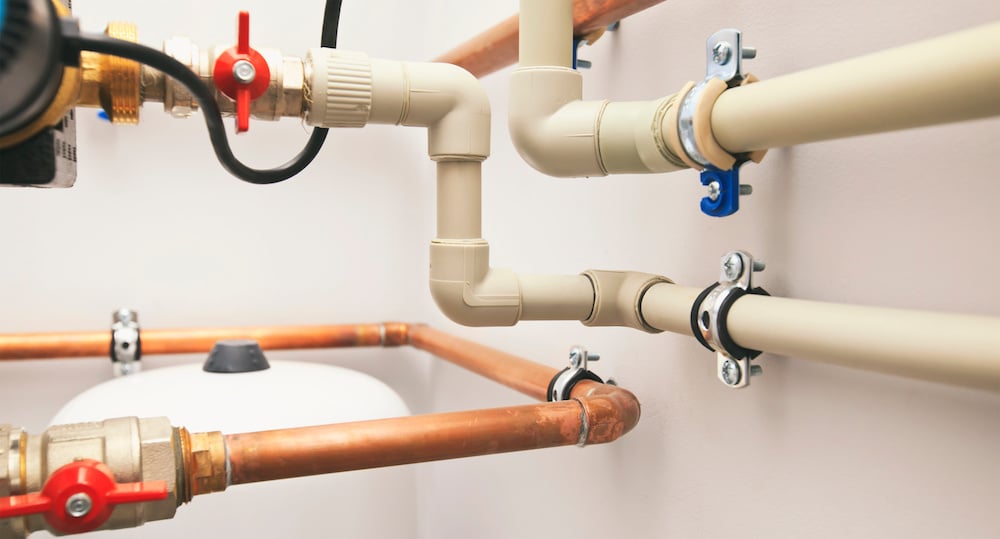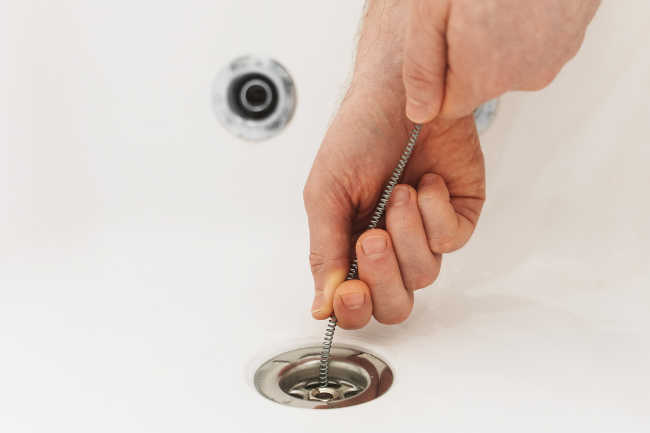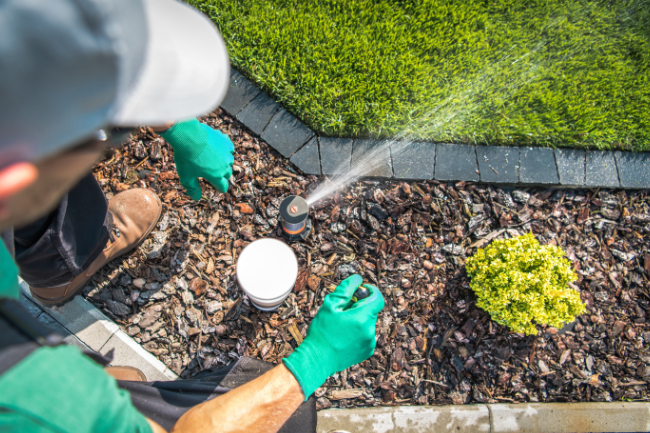12 Different Types of Plumbing Pipes Used in Homes
Posted by Express Sewer & Drain Team on

What are the different types of plumbing pipes? There are quite a few, and they have various uses, from bringing water to your bathtub to carrying waste out to your sewage system. Whether you're hiring a plumber or taking on a DIY home plumbing project, it’s good to be in the know about different types of plumbing pipes and their pros and cons. In this blog, we’ll dive into the most common types of pipes for plumbing.
12 Different Types of Plumbing Pipes Used in Homes
1. PEX Piping
PEX, or cross-linked polyethylene, is a durable plastic piping that's used for water supply lines. Rigid enough to withstand the pressures of water supply but flexible enough to weave throughout walls, ceilings, basements, and crawl spaces, PEX is a popular type of piping used for plumbing.
In addition, PEX piping is one of the least expensive types of plumbing pipes and it can easily be cut and joined together without soldering or gluing. PEX has a long life and the ability to prevent rust or corrosion from leaching into the water. PEX is also able to withstand extreme temperatures, allowing it to transport both hot and cold water. This makes PEX a popular choice for plumbers and homeowners.
It’s important to note that PEX piping cannot be used for outdoor applications; the plastic can easily be damaged by UV radiation. Some PEX piping may also affect the taste and odor of water, but concerns over contamination have been dispelled.
2. PVC Piping
PVC, or polyvinyl chloride piping, is plastic piping commonly used for waste lines as part of a sink, toilet, or shower drain line. Because it is light, relatively inexpensive, and easier to work with compared to galvanized steel pipe, it’s a popular choice. It can also be easily cut with a hacksaw and connected to other parts with piping glue.
PVC pipes protect your water from rust and corrosion better than many other types of pipes and have a smooth inner lining that protects against sediment buildup and makes them more resistant to blockages. Unless PVC piping is subjected to damage, it will last a lifetime. PVC pipe is also able to handle high water pressure, which is why it may serve as your home’s main water supply line.
One drawback of PVC piping is that it cannot withstand hot water; when exposed to it, it can begin to warp or even melt. There have also been some concerns over toxicity; although it meets all standards set by the American National Standards Institute, there are concerns that it may introduce polyvinyl chloride chemicals into drinking water, potentially causing respiratory and reproductive issues. It is for this reason that some states have banned PVC plumbing pipes from transporting drinking water.
3. CPVC Piping
CPVC, or chlorinated polyvinyl chloride, is in the PVC family. The key difference is that CPVC is chlorinated, which makes it able to withstand temperature differences that PVC cannot. In fact, CPVC piping can tolerate up to 200 degrees Fahrenheit, making it ideal for hot water transport.
Disadvantages of CPVC pipes include indoor use only (too much exposure to sunlight results in a breakdown of the pipe) and cost: it’s pricier than its cousin PVC.
4. Copper Piping (Rigid Copper and Soft Copper)
Copper piping has been a staple within the plumbing industry for decades. It has a lifespan of more than 50 years and is commonly used for sinks, showers, tubs, and other fixtures. Copper pipes are popular among plumbers and homeowners because they are corrosion-resistant and help protect water quality. That’s because it doesn’t corrode, and bacteria cannot thrive in copper pipes so it will not pollute water in any way.
Another advantage of copper piping is its ability to handle high water pressure and hot and cold water temperatures. It’s also able to be recycled, making it one of the more environmentally-friendly options on this list.
Of course, there are drawbacks. Copper piping is expensive, and due to its rigidness, it’s difficult to use in cramped spaces. There are, however, soft copper options. Soft copper is malleable and is used in short runs where space is tight and flexibility is needed.
5. ABS Piping
ABS piping, or acrylonitrile butadiene styrene, is made of a thermoplastic resin and looks very much like PVC pipe except it is black and a bit more durable. Its main use is for vent and drain lines. While it’s cost-effective and resilient to cold temperatures, exposure to UV rays can warp and degrade it, limiting its use to indoors.
One more thing to note: ABS piping tends to be noisier than other types of plumbing pipes, so if you're sensitive to sounds you may want to choose another type of plumbing pipe.
6. Flexi Piping
Flexi pipe, short for flexible pipe, is generally made of stainless steel. Its most common application is for piping connections to appliances, such as water heaters, toilets, and sinks. It's generally not permitted for use inside walls or floors.
Flexi pipe comes in many lengths and sizes, and while it’s somewhat durable, it has been known to fail after years of wear and tear. It also is rather expensive, however, you won’t need to use a lot of it on any given project.
7. Stainless Steel Piping
Stainless steel piping is actually more expensive than copper piping. A high price point, however, indicates a high level of quality. Stainless steel pipes are strong and corrosion-resistant. Because of their ability to resist corrosion, stainless steel pipes are the preferable choice in areas that are susceptible to it, such as coastal communities.
Stainless steel piping is available in both flexible and rigid versions, and it comes in a variety of sizes. Pipes are fitted together using couplings.
8. Galvanized Steel Piping
Galvanized steel is a rigid, corrosion-resistant steel piping used for drainage, water supply, and other purposes. It was once the material of choice for residential plumbing, with piping coated in a layer of zinc to prevent rusting, but it’s far less common for water supply today. That’s because galvanized steel pipes have been known to compromise water safety, corroding and building up rust that can enter the water stream over time.
Of course, galvanized steel pipes are completely canceled. They can still be used for gas supply lines and their sturdiness makes them ideal for it.
9. Cast Iron Piping
Cast iron pipe and galvanized steel pipe were common for homes and commercial properties in the early 20th century. Today, they are rarely included in new construction. You can identify cast iron piping by its dark gray color and rigidity. It’s most commonly used for sewer and other drainage purposes.
So what happened to lessen the popularity of cast iron piping? Although cast iron is very durable and has a long lifespan, it is also prone to rust and corrosion. Over time, this will affect its ability to maintain a clean water supply. These types of pipes have largely been replaced by copper or PEX pipes in residential plumbing repairs.
10. Polybutylene Pipes
Polybutylene pipes, or PB pipes, were a popular choice for plumbing in the late 70s through the mid-90s. Polybutylene is a type of plastic resin that was seen as “futuristic” and ideal for replacing copper. Plus, they were cheap! Over time, however, PB pipes lost their popularity because they ultimately were prone to leakage at the joints.
11. High-Density Polybutylene Pipes
High-Density Polybutylene pipes, also known as HDPE pipes, also came onto the scene due to the limitations of polybutylene piping. HDPE works for a variety of plumbing applications due to its durability and ability to resist corrosion.
12. Black Iron Pipes
Black iron piping, while not meant to be used in plumbing applications, was at one time a popular piping material for water supply. Today, we know that they should only be used for conveying natural gas or propane. Black iron is also a popular choice for fire sprinkler systems since it is especially effective at resisting extreme heat.
Choosing Different Types of Plumbing Pipes for Your Home
This blog was designed to give you an understanding of all the different types of plumbing pipes available to you. However, it’s important to understand that there are also laws regarding California plumbing pipes. If you’re thinking of a DIY project, it’s important to understand them. And, if you’re looking for a plumber that can recommend the best types of plumbing pipes for your home, or replace existing plumbing pipes, look no further than Express Sewer & Drain in Sacramento. We will ensure you have pipes that meet code and are the best for your residential (or commercial) piping situation. Contact us today to learn more.
Topics: Home Plumbing







